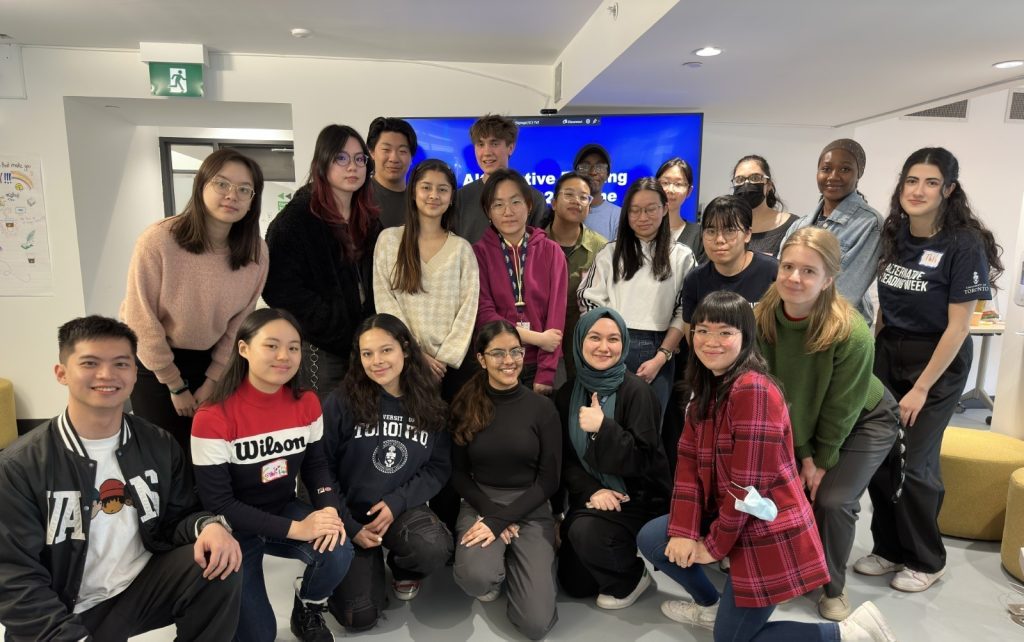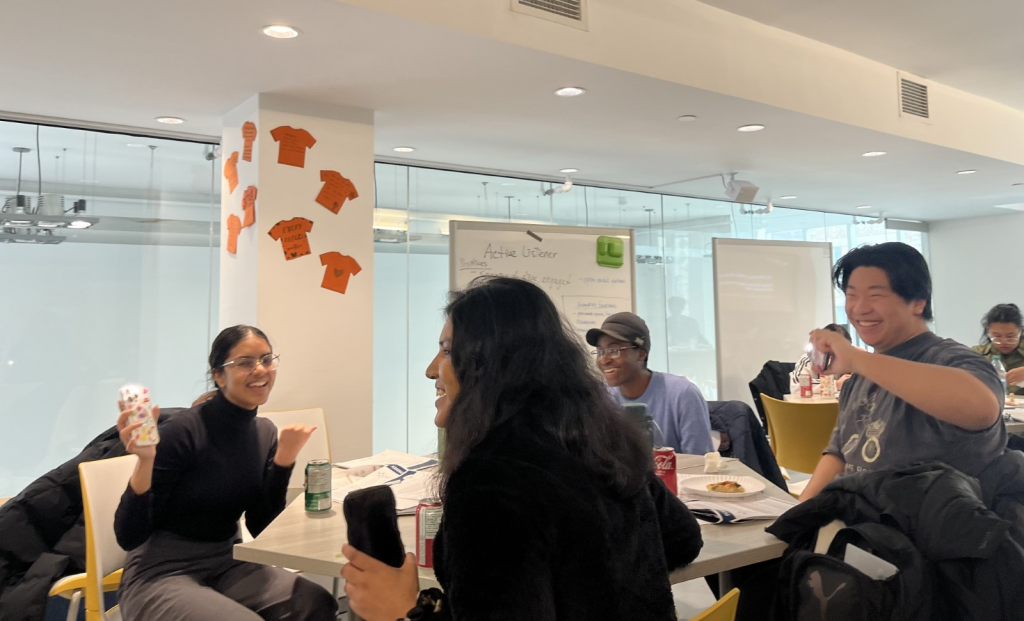In February 2024, the Innovation Hub provided a series of workshops during Reading Week for students participating in the Alternative Reading Week program through Centre for Community Partnerships. The aim of the workshops were to apply design thinking methods to a “wicked problem”: How can workplaces be more inclusive? Our facilitators, Cheryl, Mike and Lidiia shared the importance of embedding inclusivity and constructive discussion in event organization.
Written by Mike He, Digital Communications Coordinator, Master of Information, User Experience Design
Alternative Reading Week (ARW) is an initiative led by the Centre for Community Partnership where students join teams and partner with a local organization during reading week in February to learn practical skills while tackling community problems. Once again this year, the Innovation Hub was pleased to act as a community partner for the ARW program. ARW is also an opportunity for students to meet new people outside of their majors and cohorts and delve deeper into a cause that is important to them. To support several teams of ARW students in meeting these objectives, the Innovation Hub provided a series of workshops aimed at applying design thinking methods to understand a wicked problem: equity and inclusivity in the workplace.
We encouraged teams to explore a question: how might workplaces be more inclusive? We introduced students to design thinking methods and discussed how to conduct empathy-based interviews, draw needs and insights from interview data, and present findings using strong storytelling techniques.
As the Digital Communications Coordinator for the Innovation Hub, I had the pleasure to be one of the facilitators for ARW. I am so glad that I had the chance to facilitate this workshop. It felt rewarding for me to apply my knowledge of design thinking and storytelling gained from my Master of Information in User Experience Design program and share this knowledge with others. As the students applied these methods to the problem space of workplace inclusivity, I imagined how skills like design thinking and storytelling can be applied across various industries and contexts.
Impact of Storytelling
I noticed that students really enjoyed learning about storytelling. Teams discussed what makes a good story by sharing their own perspectives, and identifying what made the stories powerful. I was glad to see how team members built trust with one another through the process and were willing to be vulnerable in the discussions. Some students thought about moments they found joy and discomfort in the workplace, while others shared personal events from their past. As teams shared stories, they started to apply some of their insights to the design challenge. The honest stories expressed by students moved me because the personal touches shared made me reflect on my own experiences.
My colleague and co-facilitator Lidiia Tulenkova highlighted how students’ stories and common experiences bonded them with their peers and spoke of how reflecting on their biases in the process helped them develop self-awareness.
Lidiia: I remember seeing the spark in the eyes of the students when they shared and listened to each other’s personal stories. During the bias exercise, we aimed to encourage more self-awareness in the research process. I appreciated seeing conversations with students and the genuine curiosity they all brought. From this experience, I truly enjoyed seeing students being brought together practicing the key elements of design-thinking: empathy, careful listening, and storytelling.
Although most students seemed to be learning about storytelling techniques formally for the first time, based on the conversations I heard, they were already good storytellers. After observing students telling their own stories, I realized how being sincere and open in storytelling allowed others to see each person’s unique perspectives and individuality. I thought about how vulnerability and authenticity in storytelling are so much more important than understanding the theory and proper technique behind it. When students looked into my eyes and their voices trembled, I felt what they felt and connected their stories with my past experiences.
Building a Community
During ARW, I saw that students built friendships and shared laughter in our space. On the first day of the program, we welcomed students into the Innovation Hub and introduced a scavenger hunt for different objects and supplies around the room to help students get familiar with the space. On day 2, we organized “human bingo”, an activity which asks students to find people with certain traits and fill the blanks with their names to form a bingo. Since each person’s name can only be used once, this encouraged students to talk to all the participants in the room, and students loved learning about their peers while winning prizes. On day 3, students self-organized a “Taylor Swift karaoke” in the space and enjoyed singing classic Taylor songs with their peers.
Several students told us they valued the social activities because they were relatively new to U of T and struggled to find a sense of community in the large university setting. Some students also described loving the culture and atmosphere at the Innovation Hub and expressed interest in joining our team in the future. I am so happy that students felt comfortable in our space and made new friends. I thought that as a facilitator it was my responsibility to create opportunities for students to connect, but I was surprised that students took initiative to self-organize activities and form a community on their own.
Learning through Practice
In our programming, we tried to give most of the time in ARW to students for discussions and group activities and spend less time on lectures, and it worked well. Students appreciated they had the time to experiment with tools like the empathy map and personas immediately after we introduced them.
We also encouraged students to be playful and creative in their delivery, and students exceeded our expectations. We saw students acting out the stories of their personas, which made us laugh, and some of the groups even went above and beyond by proposing solutions to the design challenge we posed. We were glad to see students put so much effort into the presentations, because it showed us they did not see this as a task they had to complete, but as an enjoyable experience in their reading week.
Research Coordinator, Cheryl Nong, also expressed their hope for students to continue to practice design thinking methods outside of the ARW context.
Cheryl: After the program’s conclusion, I could tell that students were walking out thinking deeply about the design challenge we posed, but to tell the truth, the question itself didn’t matter that much. I’m excited just knowing that there are student changemakers on campus who care enough to pick up the tools of design thinking to further their vision, no matter what that topic might be. I feel hopeful thinking about where all of those students might go and the impact they will have in their future communities.
We were impressed by the students’ creativity, thoughtfulness, and passion during the event, and we were confident that their deep thinking wouldn’t be limited to the research question alone.
The Impact of Inclusion
Students’ work during the Alternative Reading Week continues to remind us how we can strive to be a more inclusive and welcoming workspace for everyone at the Innovation Hub. Students’ positive reactions to open discussions and hands-on activities indicate the importance of giving time in workshops for students to connect and interact. When we design opportunities that recognize the needs of students, we create places where students can feel excited in the learning process. When we design with diversity and inclusion in mind, spaces become more welcoming, approachable, and inviting for people to be their authentic selves. Perhaps workplace inclusivity is about engagement, and making space for people to connect, feel safe, and be vulnerable in meaningful ways.




0 comments on “Alternative Reading Week 2024: Integrating Inclusivity in the Workplace”